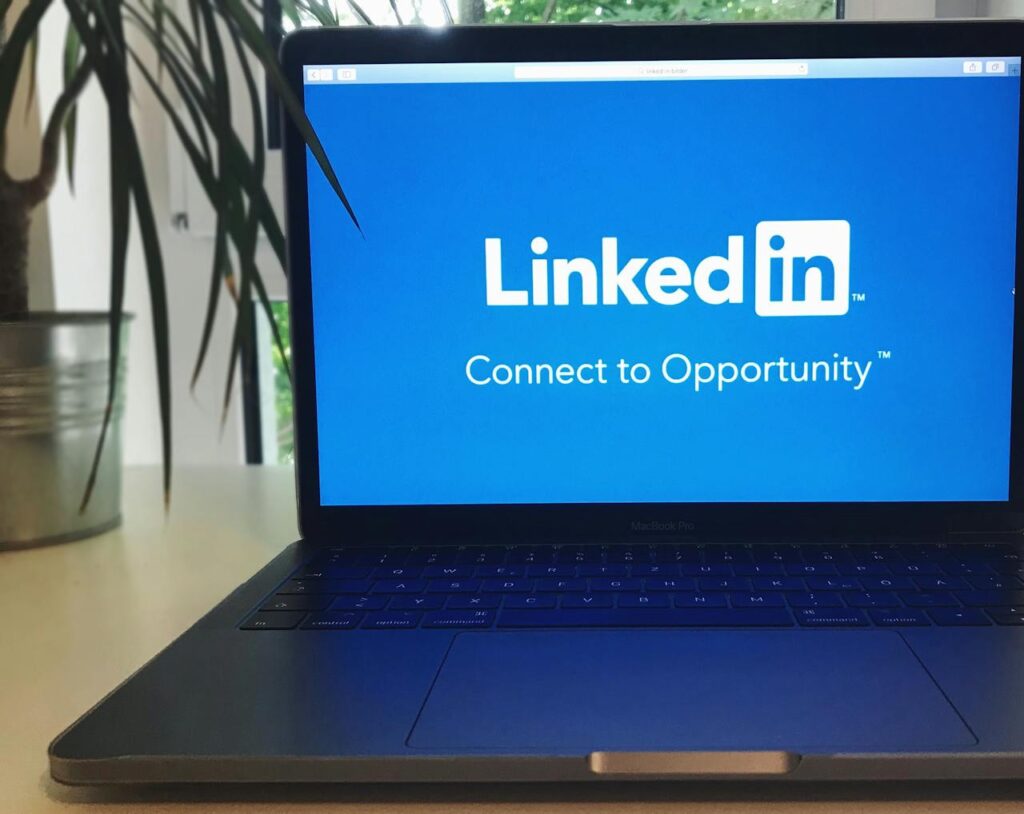Most early-stage founders don’t have a PR team. They don’t have paid ads. And they definitely don’t have time to “build a personal brand.” But here’s what they do have: a product in motion, a story worth sharing, and access to two of the most powerful investor channels out there—LinkedIn and Twitter.
If you’re trying to raise your first round, these platforms are not just nice-to-haves. They’re tools. Done right, they make investors come to you.
You don’t need to go viral. You just need to be clear, consistent, and strategic in how you show up. This article will break down how to do exactly that—step by step. No fluff. No gimmicks. Just honest tactics that work for technical founders who are building in the real world.
Let’s get started.
Why Investors Scroll Before They Schedule
Investors are watching—even when they’re not replying

Most founders assume fundraising starts with cold emails or warm intros. But in reality, for many investors, the first checkpoint is your public presence. They hear your name, then they go look you up.
And where do they look? LinkedIn and Twitter. Not your pitch deck. Not your GitHub. Your profile. Your posts. The signal you’re putting out in public.
This is where they try to answer: Is this founder serious? Are they building with focus? Do they have clarity about what they’re solving? Can they communicate simply?
You won’t always know who’s watching. But if you post with purpose, it won’t matter. Because when you share well, they’ll get what they need. And when it’s time to talk, they’ll already trust you.
It’s not about going viral—it’s about being visible
A lot of founders say, “I’m not a content person.” That’s fine. You don’t need to be a content creator. You just need to be consistent and clear.
Being active on LinkedIn or Twitter doesn’t mean posting every day. It means showing up often enough that someone who’s following you feels like they know what you’re building and why it matters.
You’re not trying to be famous. You’re trying to be findable. You’re creating a trail of proof—of what you think, what you’re building, and how far you’ve come.
That trail helps investors say yes faster. Because now you’re not a stranger. You’re a founder they’ve seen evolve over time.
Your Profile is Your First Pitch
Treat your bio like your opening line
Before anyone reads your post, they’ll read your bio. This is your headline. Your hook. Your one-sentence pitch.
It doesn’t have to be clever. It has to be clear. What are you building? Who is it for? Why is it new?
Something like: “Building smarter edge AI systems for industrial robotics” is better than “Tech founder | AI enthusiast.” One tells a story. The other is noise.
The goal is not to impress everyone. The goal is to help the right people say, “I get what this person is doing.”
Link to the right next step
Investors who like what they see will want to dig deeper. Don’t make them guess where to go.
Link to something that shows progress. That could be your website, a short demo, a Notion roadmap, or even a pinned thread explaining your vision.
Keep it tight. Keep it current. The point isn’t to share everything. It’s to make the next step easy.
And yes—if you’re ready to raise, say that clearly.
Something like, “Currently raising a pre-seed round” or “Looking for technical angels in AI and robotics” can open a surprising number of doors.
Posting with Purpose: What to Share to Attract Investor Attention
Make your product journey the content
You don’t need to be a marketing expert to write posts that get noticed. The best content you can share is the story you’re already living—what you’re building, what you’re learning, and how you’re thinking through hard problems.
Investors follow hundreds of founders, but the ones who stand out are the ones who let others in. Not with hype, but with honesty. Talk about a decision you made last week and why it mattered. Share what changed after you ran your last experiment. Explain why you pivoted a feature or rewrote a core part of your system. These moments are short, human, and incredibly powerful when shared clearly.
You’re not just sharing updates. You’re giving people a window into how you work. And when investors see that you’re building fast, thinking clearly, and staying focused—they start paying attention.
The best signal isn’t polished—it’s real
Most founders overthink what they should say. They wait until something feels “big enough” to share. But what investors really want to see is momentum. Not press releases. Not launch videos. Just forward motion.
Did you ship something new? Test with a user? Discover something unexpected in your prototype? Say that. And say it simply. These are the signals that show your startup is alive. That you’re not stuck in planning mode—you’re building, learning, and moving.
Short updates that show progress matter far more than long essays. Don’t worry about writing perfectly. Just speak clearly. Over time, these updates compound into a pattern of trust.
Talk through how you think, not just what you do
If all you share are product updates, you risk sounding like a changelog. What makes your story sticky is explaining how you think—how you make choices, where you focus, what you’re prioritizing.
Let people see the thinking behind the work. Why did you pick this go-to-market path? What trade-off did you wrestle with last week? Why did you spend time protecting your IP before launching publicly?
When you show your thought process, investors start to understand not just what you’re building—but why you’re likely to win.
It signals maturity. It shows strategic clarity. And it tells them you’re not guessing your way forward—you’re building with intention.
Building Inbound Attention Without Chasing It
Consistency creates luck

You don’t have to be loud. You just have to be present.
Posting once every few weeks won’t move the needle. But if you show up regularly—just once or twice a week—with honest updates, smart reflections, or simple insights, the right people start to notice. Not right away. But over time, those quiet signals compound.
Investors often won’t like or comment. But they’re reading. They’re tracking. And if you stay consistent, you become the founder they think of when your space comes up in conversation. That’s how inbound interest starts.
You didn’t have to pitch them. You just had to be visible at the right moment—and that only happens if you’ve been there all along.
Ask, don’t announce
One mistake founders make is treating LinkedIn and Twitter like stages instead of rooms. You’re not giving a TED Talk. You’re starting a conversation.
Instead of posting “We’re launching X,” say, “We’ve been testing X—curious how others have solved this.” Instead of “We’re raising,” say, “We’re starting to look for sharp investors in this space. If that’s you—or you know someone—let’s chat.”
This shift invites people in. It opens doors without asking directly. And it makes you more approachable, which is exactly what early-stage investors look for.
They don’t need a show. They need a reason to reach out.
Use Twitter for ideas, LinkedIn for proof
Each platform plays a different role.
Twitter is fast, noisy, and idea-driven. It’s great for sharing thoughts as they come—less polished, more conversational. It’s where people test ideas, post insights, and react to the market.
LinkedIn is slower, but deeper. It’s where people look for signals of credibility. Progress updates, product walkthroughs, investor mentions, and big decisions tend to land better here.
If you’re building in public, use both platforms—but play to their strengths. Share your raw thinking on Twitter. Show your momentum and structure on LinkedIn. Over time, this two-sided approach helps people understand both how you think and how you build.
Turning Online Interest into Investor Conversations
Your content builds curiosity—but your follow-up builds connection
Attracting investor attention online doesn’t stop at the post. It continues in the quiet follow-up. This is where most founders drop the ball.
You might get a like from someone you admire. Maybe a DM. Or a comment from a partner at a fund. This is your cue to move from public visibility to private momentum. Not with a hard ask, but with a soft invitation to connect.
If they like your post, thank them and ask if they’d be open to hearing more. If they comment thoughtfully, reply and ask to continue the conversation over a quick call. Keep it casual, not pitchy. You’re not asking for money—you’re inviting them into the journey.
These conversations compound. One call leads to a referral. One referral leads to warm intros. And suddenly, your inbound content turns into real investor motion—not from pushing, but from pulling.
Keep your message short and rooted in signal
When you DM or email an investor who’s shown interest, avoid the urge to re-pitch everything. They already saw your post. They already have context. Now you just need to open a door.
Try something simple like:
“Hey [Name], appreciate your thoughts on my recent post. I’m building something in [space] and we’re making fast progress—would love to get your perspective if you’re open to a quick call.”
You’re not selling. You’re showing respect, momentum, and interest in their view. That’s what opens real conversations.
And when you do land a call, focus on what matters—your sharpest insight, your clearest progress, your biggest question. Keep it tight. Let your thought process do the work.
Post-call, keep them warm—even if they don’t invest
Not every investor will say yes. Most won’t, especially at the early stage. But that doesn’t mean the conversation is over. The best founders treat every interaction as a chance to build a long-term relationship—not a one-time ask.
After a call, send a brief follow-up. Thank them. Share a takeaway from the conversation. Mention that you’ll keep them updated.
And then do exactly that. Every month or so, send a short update—product progress, new insight, a technical milestone. Keep them in the loop. Stay in their mind.
Investors are people. They don’t always have a check ready. But if they’ve seen your growth over time—through calls, posts, updates—they’re far more likely to come back when they are ready. Sometimes it takes a few weeks. Sometimes a year.
That’s why consistent communication wins. It turns a no into a “not yet”—and eventually into a “let’s talk again.”
Avoiding the Traps That Push Investors Away
Don’t oversell on social

The fastest way to lose trust is to exaggerate. It’s tempting to make your updates sound more impressive than they are—especially when you see others doing it. But investors can spot spin. They talk to hundreds of founders. They’ve seen every version of “we’re growing fast” and “in stealth” and “big things coming.”
What makes them lean in is honesty. A small update, clearly explained, is better than a big promise with no details. You don’t have to prove you’re perfect. You have to show that you’re moving and learning.
Stick to real numbers, real stories, and real reflections. That’s what builds trust. And trust gets meetings.
Don’t try to go viral—it’s a distraction
Virality is nice for exposure. But it rarely drives meaningful investor interest. Most great early-stage conversations don’t start from a post with 10,000 likes. They start from a thread or update that gets seen by just the right few people.
The danger of chasing virality is that it changes how you write. You start optimizing for reactions, not relationships. You focus on being clever instead of being clear. And you begin shaping your content for strangers—not the few people who might actually fund you.
Keep your voice grounded. Write for the people you want to work with. That’s how you build real signal—not noise.
Don’t try to do too much at once
You don’t need to post every day. You don’t need to share every thought. You don’t need to respond to every comment instantly.
Your goal isn’t to be everywhere—it’s to be credible. One strong update a week. One thoughtful comment on someone else’s post. One good conversation each month. That’s enough to stay visible and build momentum.
The rest of your energy should stay where it belongs: building your product, talking to users, and protecting your edge.
That’s the real work. Your online presence should support it—not replace it.
What Investors Look for Online—Even if They Don’t Say It
Signal of thought, not just progress
Investors don’t just want to see what you’ve done. They want to understand how you think. That’s why reflective posts are so powerful. A short post about what you learned from a failed experiment can carry more weight than a glossy launch announcement.
When you share your reasoning—why you made a tradeoff, why a result surprised you, how you’re approaching a technical challenge—you show that you’re not just executing, you’re leading. That insight gives investors confidence that you’ll be able to adapt, grow, and make smart calls with their money.
Signal of consistency over time
You don’t need a massive following to win attention. What matters more is that you’ve shown up consistently for a while. Your posts don’t feel like a last-minute push before fundraising—they feel like the natural rhythm of someone who’s always building, always thinking, always communicating.
This pattern tells investors something simple and important: you’re not just trying to raise. You’re actually running a company.
And when you finally do announce your round, it doesn’t feel out of nowhere. It feels earned. That’s the kind of raise investors want to be part of.
Turning Followers Into Backers
When to shift from content to capital

If you’ve been consistently sharing your progress, building in public, and having quiet investor conversations behind the scenes—eventually, the question becomes: When do I formally announce the raise?
There’s no perfect moment. But a good time is when you have enough momentum behind the scenes to turn public attention into action. That could be when a few checks are already committed, when your product hits a meaningful milestone, or when your patent strategy is in place and your core IP is protected.
At that point, you don’t need to do anything fancy. Just say what’s happening.
Something simple like: “We’re raising a pre-seed round to scale our robotics platform from prototype to pilot. Already have great technical partners onboard. Looking to add mission-aligned investors—DM me or tag someone we should meet.”
That’s it. No hype. No hashtags. Just honest signal. And if you’ve been showing up with clarity all along, that one post can be enough to start serious conversations.
Build your list quietly as you build publicly
Every time someone engages with your posts, likes your updates, or replies to your thinking—it’s a signal. And over time, it adds up to a shortlist of people who already trust you.
Don’t let that list sit idle. Build a lightweight CRM, even if it’s just a Notion table. Track who’s engaged. Who’s DM’d you. Who liked your last few product updates. When the time is right, reach out directly—not to pitch, but to continue the conversation.
That context helps you avoid cold outreach. These are warm leads, earned through signal and story, not spam.
And those conversations—built on top of shared ideas and public progress—are some of the strongest you’ll have.
Invite others into the momentum
When investors do start reaching out, don’t treat each conversation like a solo dance. Let them know others are interested. That there’s motion. That you’re building something others want to be a part of.
You don’t need to pressure anyone. Just share the facts: “We’re in early conversations with a few funds.” Or “Two angel checks are already in.”
That subtle framing shifts how they see you. You’re not asking for help. You’re building something others are backing—and now they can, too.
That shift in perception often makes all the difference.
Final Thoughts: You Don’t Need to Be Loud—Just Clear
At Tran.vc, we work with technical founders who don’t have time for games. They’re building hard things—robotics, AI, deep tech. They don’t want to tweet their way to hype. They want to quietly earn the attention of serious investors.
And here’s what we’ve seen again and again: you don’t need to go viral to raise money. You don’t need to become a “thought leader.”
You just need to show up with focus. Share your work. Show your thinking. Protect what you’re building. And do it all in a way that feels real.
That’s how you attract the right investors on LinkedIn and Twitter—not by trying to be someone else, but by being clear about who you already are.
And if you’re ready to turn your technical edge into something defensible, protected, and fundable, we can help. At Tran.vc, we invest up to $50,000 in in-kind IP and patent strategy to help early founders turn their inventions into lasting companies.
Apply now: tran.vc/apply-now-form
You don’t need a huge following to raise. You just need the right signals.
We’ll help you build them.
